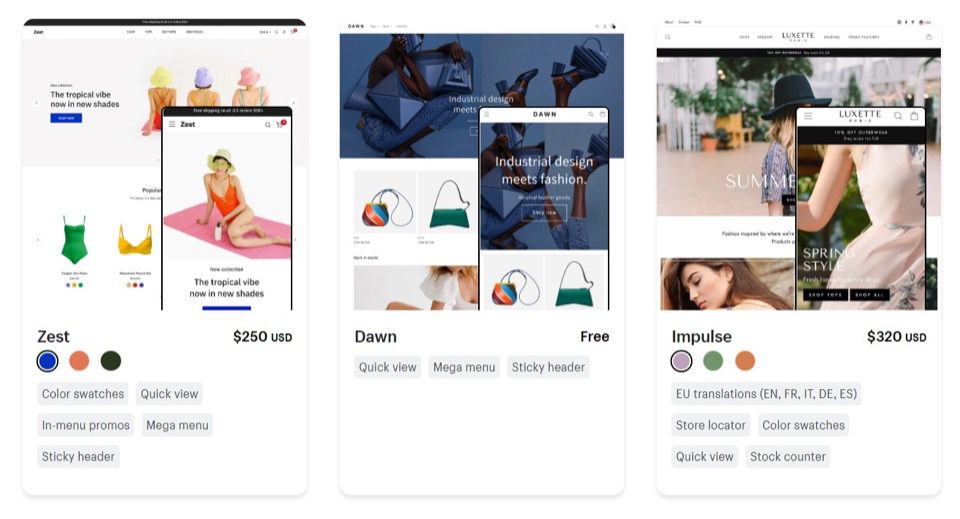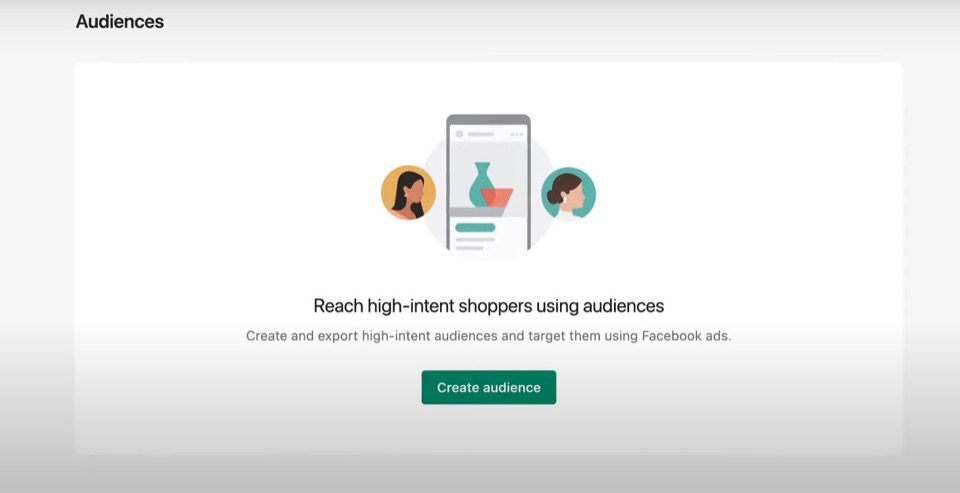
Entrepreneurs no longer need a garage full of products to start an online store. Shopify is one of the leading ecommerce platforms in the United States, and with the global dropshipping market expected to top $550 billion by 2025, now is the time to understand the pros and cons of operating an inventory-free virtual storefront.
Whether you’re an aspiring entrepreneur considering launching an ecommerce store or a current business owner looking to minimize costs by streamlining shipping logistics, Shopify’s user-friendly platform provides dropshipping solutions that can open the door to new audiences and increase revenue. Here’s everything you need to know about how to dropship on Shopify.
Table of Contents
- 1 What Is Dropshipping?
- 2 How Do Dropshipping Platforms Such As Shopify Work?
- 3 The Benefits of Dropshipping
- 4 The Drawbacks of Dropshipping
- 5 The Advantages of Choosing Shopify for Dropshipping
- 6 FAQs About Dropshipping on Shopify
- 6.1 Is Shopify good for beginners?
- 6.2 How much does dropshipping with Shopify cost?
- 6.3 How do I identify a good dropshipper for my Shopify business?
- 6.4 How frequently do you get paid using Shopify to dropship?
- 6.5 Do you need a business license to sell on Shopify?
- 6.6 What countries does Shopify work in?
- 7 Get Started with Dropshipping on Shopify
What Is Dropshipping?
Dropshipping is a fulfillment model that outsources inventory logistics. You sell an item to a customer, but a third party — usually a wholesaler or manufacturer — operates the warehouse, packages the item, and ships it to the customer.
The store owner, called the dropshipper, enjoys the decreased overhead of not physically handling products, and the wholesaler benefits from the increased visibility and sales without having to invest in a storefront. Shopfiy automates how these parties work together.
How Do Dropshipping Platforms Such As Shopify Work?
If you didn’t use Shopify, you’d have to make your own arrangements with suppliers and develop a system for tracking what inventory they have available (so you don’t advertise an item that’s out of stock). The right platform automates most of this back-and-forth, connecting you with suppliers and calculating the logistical complexities of shipping.
The Shopify App Store has many apps that will connect you with suppliers. You also have the option to partner with suppliers outside of the App Store and import your product list. You’re able to set your own prices and shipping rates, and then you can easily manage payments and see your store’s analytics from your Shopify account.
The Benefits of Dropshipping
On average, dropshipping businesses generate up to 50% more profit than sellers who maintain their own inventory. So, how exactly does using dropshipping platforms such as Shopify help businesses increase revenue? Here is a look at some potential advantages of adopting a dropshipping fulfillment model for your business.
- Minimal Upfront Expenses
Because businesses that manage their own inventory have to make a hefty initial investment in stocking the products that they are selling, they are typically subject to much higher overhead costs than businesses that outsource inventory management to a dropshipper. When you open brick-and-mortar businesses, you are subject to extensive startup expenses such as store rental and staffing costs, in addition to the money you invest in establishing your inventory.
- Scale Faster
Cutting down on overhead costs also means that dropshipping on platforms such as Shopify can help entrepreneurs to get their business up and running almost immediately, even if they don’t initially have a large amount of capital at their disposal. Because you don’t need to wait for sales to offset inventory expenses, you may also start to notice a profit sooner than you would with other business models.
This makes dropshipping especially great for small businesses. 62% of online shoppers report that they expect merchandise to arrive within three business days of placing an online order.
How can dropshipping platforms such as Shopify transform the shipping process? For small businesses or first-time online entrepreneurs, shipping processes such as packaging, order tracking, and tracking inventory can take a significant amount of time and labor, leading to delayed shipping times and frustrated customers. Dropshipping platforms such as Shopify allow business owners to hand over these logistics to experienced suppliers, making it an ideal fulfillment model for new business owners and businesses with a small staff.
- More Control Over Product Stock
With dropshipping, businesses aren’t charged for a product until a customer places an order. This means that, as a business owner, you only pay for products that you actually sell, eliminating the risk of overstocking by paying for excess inventory that goes unsold.
You’ll also have more flexibility in the products you can offer. Because a dropshipping fulfillment model does not typically require businesses to pay for inventory in advance, business owners have more freedom to change the products they are selling with relatively little notice. This flexibility lets business owners adjust their inventory according to new innovations and evolving market trends, and pivot quickly to meet changing customer demands.
Typically, switching products means purchasing a considerable amount of the new product in advance. Dropshipping minimizes risk by allowing business owners to test out new products with their target audience to determine market viability. If the new product does not prove to be a good fit for its target audience, business owners can choose to discontinue the item with minimal fiscal repercussions.
- Work From Wherever
When you use dropshipping platforms such as Shopify, because you are not shipping goods yourself, you are not tied to the location where the inventory is stored. As a business owner, this means that you can conduct your business from virtually any location, as long as you have your laptop and reliable internet access, making it easy to manage your storefront no matter where you are located.
The Drawbacks of Dropshipping
While it may sound like easy money with great flexibility, dropshipping has some downsides that must be considered.
- Competition: Because it requires little capital and business experience to get started, dropshipping can be a fiercely competitive market, and it takes a lot of planning and strategizing if you want to see your business take off.
- Low profit margins: Although you are putting less money into overhead costs, because you are paying a dropshipper for the items that you sell, you also receive less money in return for your product. This can lead to relatively low profit margins, particularly when your business is just starting out.
- Limited customization options: Because you are selling goods that are created by a third party, you are limited to selling products that your suppliers carry. You aren’t free to offer a product in a new color or a new flavor, for example.
- Customer service issues: Should shipping or fulfillment issues arise for your customers, dropshipping can make providing high-quality customer service difficult. If, for example, your supplier drops the ball, you as the business owner are left to try and resolve the issue with the customer, even though you have virtually no part in the shipping process. Over time, this can reflect poorly on your brand.
- Makes brand-building difficult: Some dropshipping suppliers allow you to print your logo on the product, but this isn’t a given. Once again, because the shipping process is out of your control, it can be difficult to build a cohesive brand identity as a business that uses dropshipping.
Coalition Technologies’ dedicated team of web design and development experts can help you get the most out of dropshipping on Shopify. We equip you with the tools you need to successfully navigate the dropshipping world and implement strategies that will minimize risks.
The Advantages of Choosing Shopify for Dropshipping
For business owners seeking to adopt a dropshipping fulfillment model, there are multiple ecommerce platforms to consider. Here are some of the reasons why Shopify has become one of the leading dropshipping platforms for business owners:
- Shopify makes it simple to optimize the storefront user experience

With many user-friendly, easy-to-navigate storefront themes to choose from, Shopify makes it easy for business owners to create the right atmosphere for their brand. It’s easy to add new features, allowing you to adapt your storefront layout to keep up with customer demands and feedback.
Shopify also allows business owners to easily add faceted search filters that make their storefronts easier to navigate. These filters allow customers to refine search parameters according to the specific type of product they are looking for, connecting them quickly with a product that meets their needs without having to spend excessive time navigating through different pages of the website.
- You can automate the process of finding new customers

Shopify’s Audiences streamlines the process of connecting with new customers by using machine learning to identify new potential buyers. You can develop targeted marketing campaigns that speak directly to that demographic’s values, pain points, and buying habits.
Audiences also has a powerful reporting tool to track the performance and outcomes of customized campaigns, and a unique attribution model that allows business owners to track their customers’ journey.
- You can seamlessly sell to a global audience
One key advantage of running an ecommerce business is the ability to reach a global audience with your product. Yet factors such as language differences, tax laws, and shipping restrictions can present barriers for ecommerce business owners seeking to reach internationally.
In 2021, Shopify rolled out Shopify Markets to remedy these issues. Shopify markets enable business owners to effectively market and sell their products to a global market. With the Shopify Market feature, business owners are able to target specific audiences, manage region-specific marketing strategies, and tailor the shopping experience directly to customers residing in different countries. The feature allows businesses to translate their entire storefront into different languages based on customer location and comes equipped with a tool that automatically calculates import tax and duty costs for international customers.
- Shopify is raising the bar for fast, affordable shipping
Shopify is constantly seeking out innovative solutions to streamline the dropshipping order fulfillment process and instill customer confidence. Studies have shown that 73% of online shoppers who have begun an online order have abandoned their cart due to associated shipping charges.
Shopify’s acquisition of Deliverr, a top fulfillment service provider, makes Shopify even more competitive with large companies such as Amazon in terms of providing fast, inexpensive shipping options. Deliverr’s state-of-the-art software system and extensive network of strategically distributed warehouse hubs allow business owners to minimize shipping time and costs by shipping goods from warehouses located closer to customers.
FAQs About Dropshipping on Shopify
Is Shopify good for beginners?
Shopify’s intuitive, user-friendly interface makes it the ideal choice for new business entrepreneurs or business owners that have little experience with web designer online marketing.
Shopify comes equipped with a wide variety of easy-to-use features and tools that streamlines the dropshipping process. Shopify also has a number of informative articles and a large support community to help users make the most of their Shopify subscriptions.
How much does dropshipping with Shopify cost?
Shopify Basic is $29/month, and this plan is sufficient for most beginning businesses. Keep in mind that other costs will cut into your profit margins dropshipping on Shopify such as the purchase and shipping fee for each product, plus credit card processing fees.
How do I identify a good dropshipper for my Shopify business?
Because you are selling the supplier’s products under your business’s name, selling low-quality or poorly made products will reflect poorly on your brand, so it is important to work only with suppliers who have proven that they stock high-quality goods.
To minimize risk and cut down on the time it takes to find a dependable dropshipping supplier, Shopify recommends an app called DSers, which streamlines the process by automatically connecting your storefront with thousands of reliable suppliers who stock the specific products you want to sell.
How frequently do you get paid using Shopify to dropship?
By default, Shopify pays business owners out as soon as funds are available on every business day. Some business owners choose to set up their pay in weekly, bi-weekly, or monthly installments.
Do you need a business license to sell on Shopify?
There is no standard requirement for a business license to dropship on Shopify, unless required by country, city, state, or local ordinances.
What countries does Shopify work in?
Shopify is available in virtually every country, but the international availability of a dropshipping service depends on the particular dropshipping company.
Get Started with Dropshipping on Shopify
Partner with Coalition to learn how to most effectively use Shopify’s dropshipping services to scale your business. From advising you on how to market your products to assisting you with backend development, Coalition Technologies helps you succeed. Connect with our digital strategists for a free consultation.

